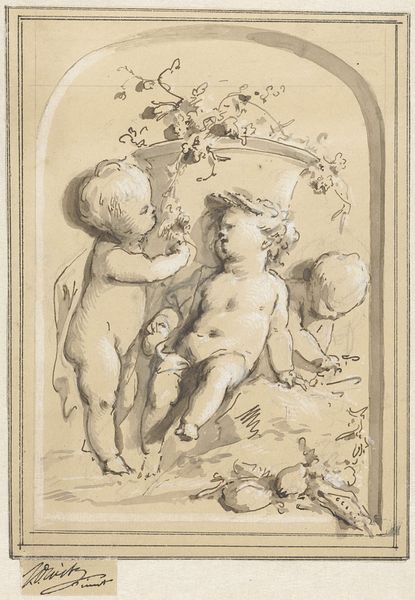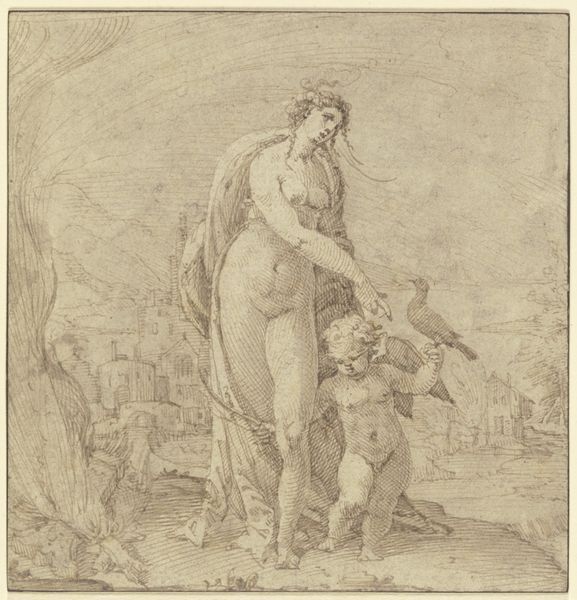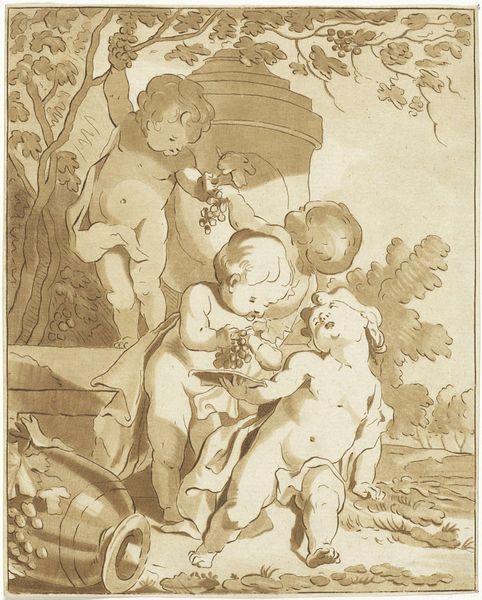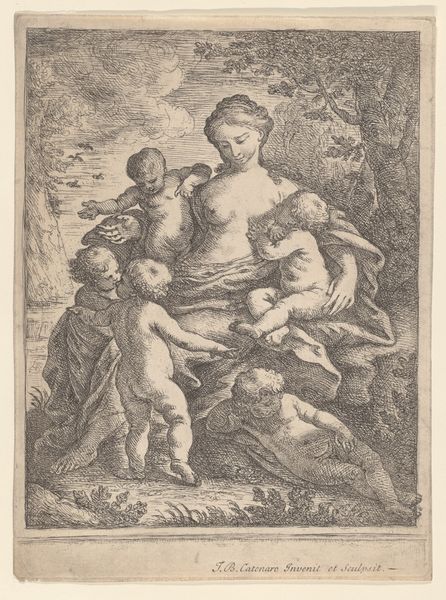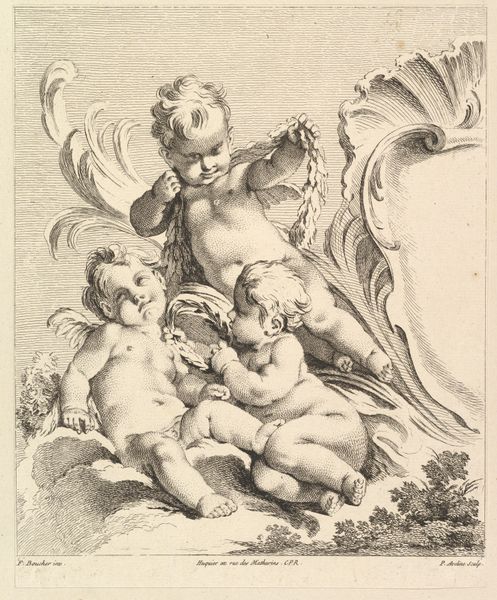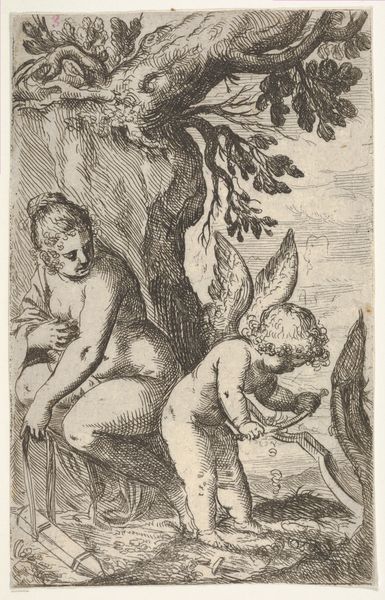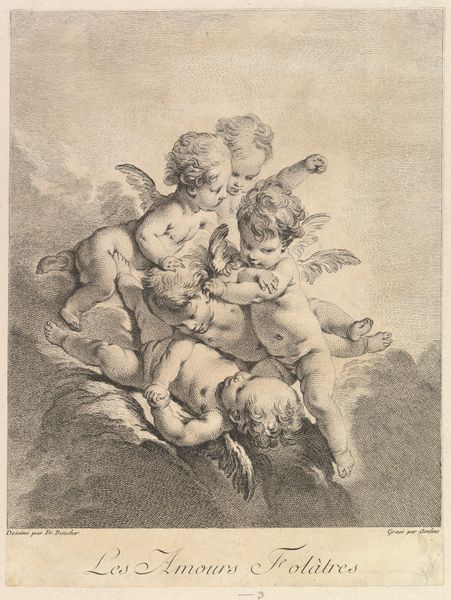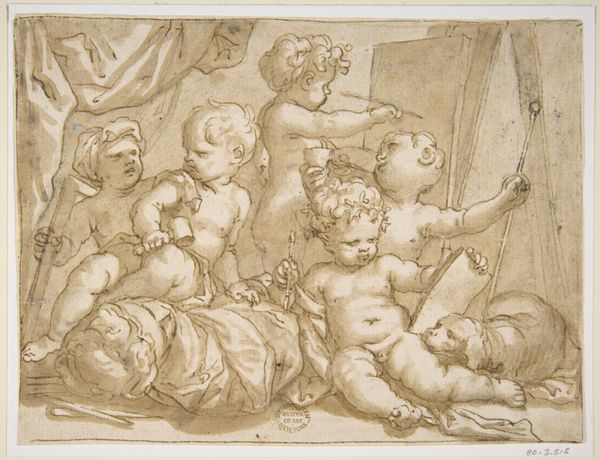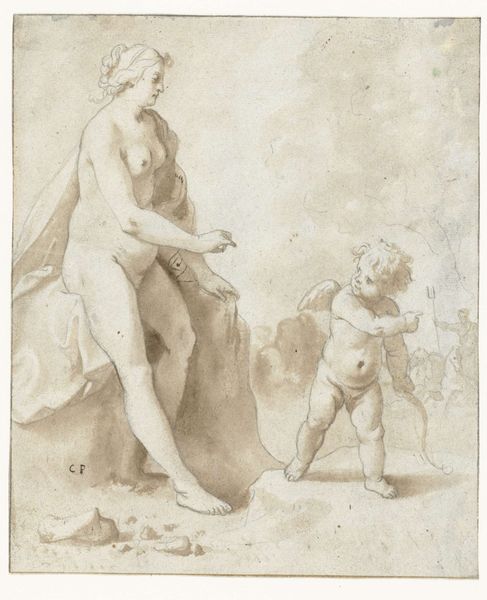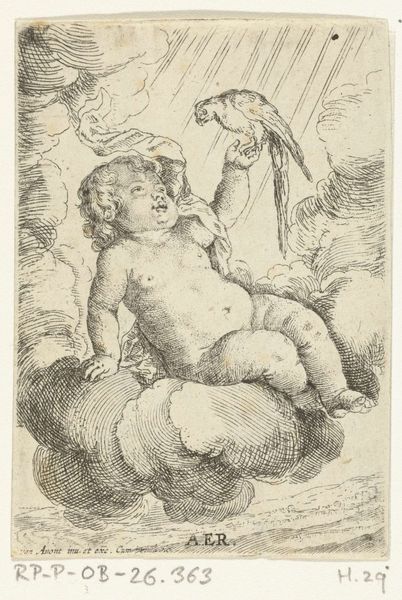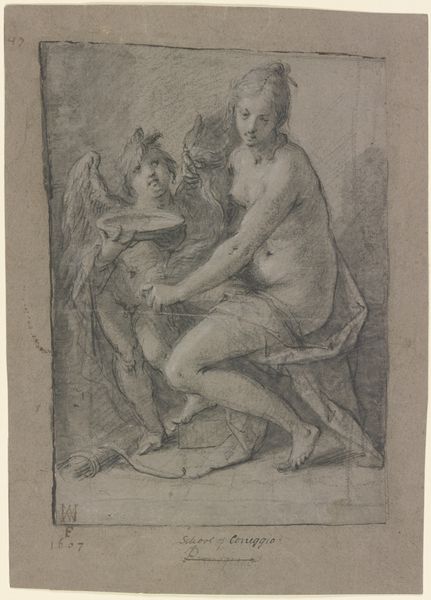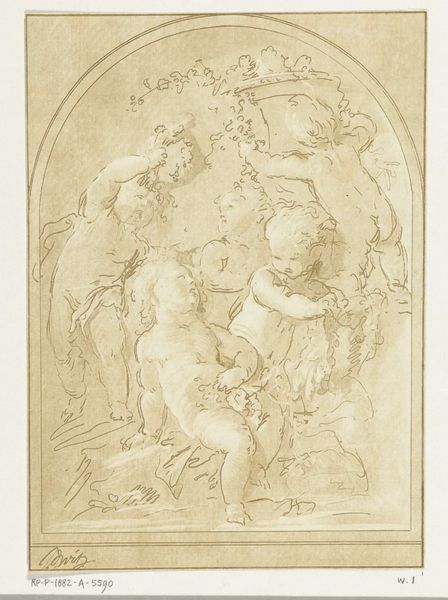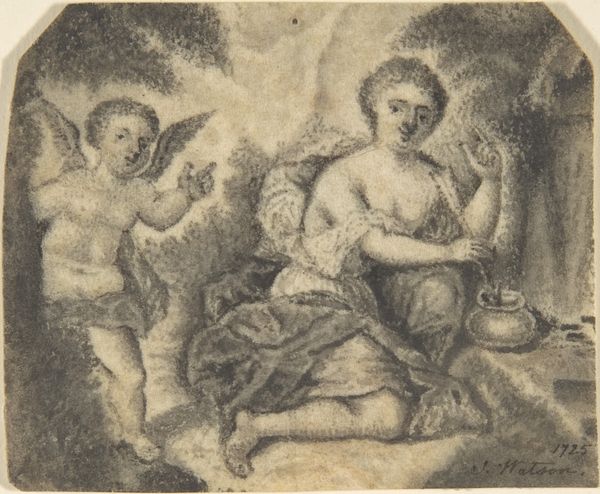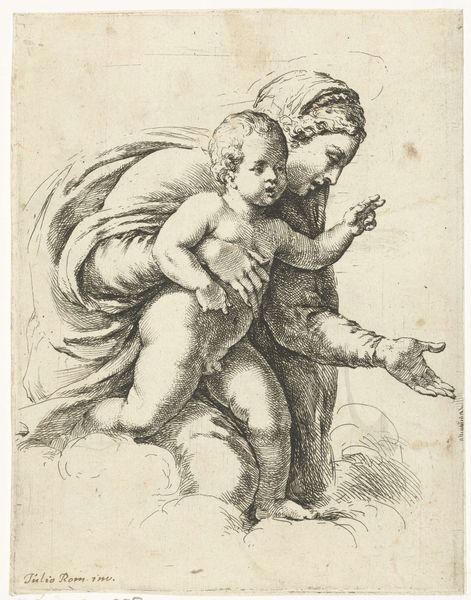
drawing, paper, ink
#
drawing
#
allegory
#
baroque
#
figuration
#
paper
#
ink
Dimensions: height 158 mm, width 128 mm
Copyright: Rijks Museum: Open Domain
Curator: This delicate ink and paper drawing is titled "Herfst en Winter," or "Autumn and Winter," attributed to Jacob de Wit and dating from sometime between 1705 and 1754. Editor: Wow, even in monochrome, you feel the chill and the coming sleepiness of the world, don't you? It's there in the hunched shoulders of the cherub on the left. He’s practically hugging himself! Curator: De Wit often explored allegorical themes in his work. The juxtaposition of autumn and winter as embodied by these cherubic figures invites us to reflect on the cycle of seasons and their associated symbolism. We're seeing Baroque allegories. Editor: Exactly! I'm picturing the studio, probably quite grand, with sketches pinned up everywhere. De Wit probably had some elaborate discourse with a patron in order to agree on the themes, am I wrong? I feel the social framework so intensely, like theatre as it’s born! Curator: Absolutely. Patronage played a crucial role in shaping the art market. Works like this, though seemingly light, participated in complex networks of social and economic exchange. These drawings would sometimes serve as preliminary studies for larger, more permanent works. The art world of the 18th century was not so democratic as what we experience today. Editor: So, these weren’t necessarily meant to stand alone, or carry their full artistic power? What a thought! Looking at them now though… they *do* stand. I mean, just look at how expressive De Wit is able to be! It looks spontaneous, gestural, like he’s capturing a fleeting feeling! Curator: Precisely. De Wit masterfully employed ink to create nuanced textures and tonal variations, adding depth to these seemingly simple figures. Editor: Well, he definitely got me! Looking at it makes me crave a glass of red wine, fireplace blazing... I feel like I’ve received a little emotive message sent over three centuries, I would say it is timeless. Curator: A lovely way to capture the essence of this artwork and De Wit’s remarkable skill. Let’s move on to the next piece!
Comments
No comments
Be the first to comment and join the conversation on the ultimate creative platform.
